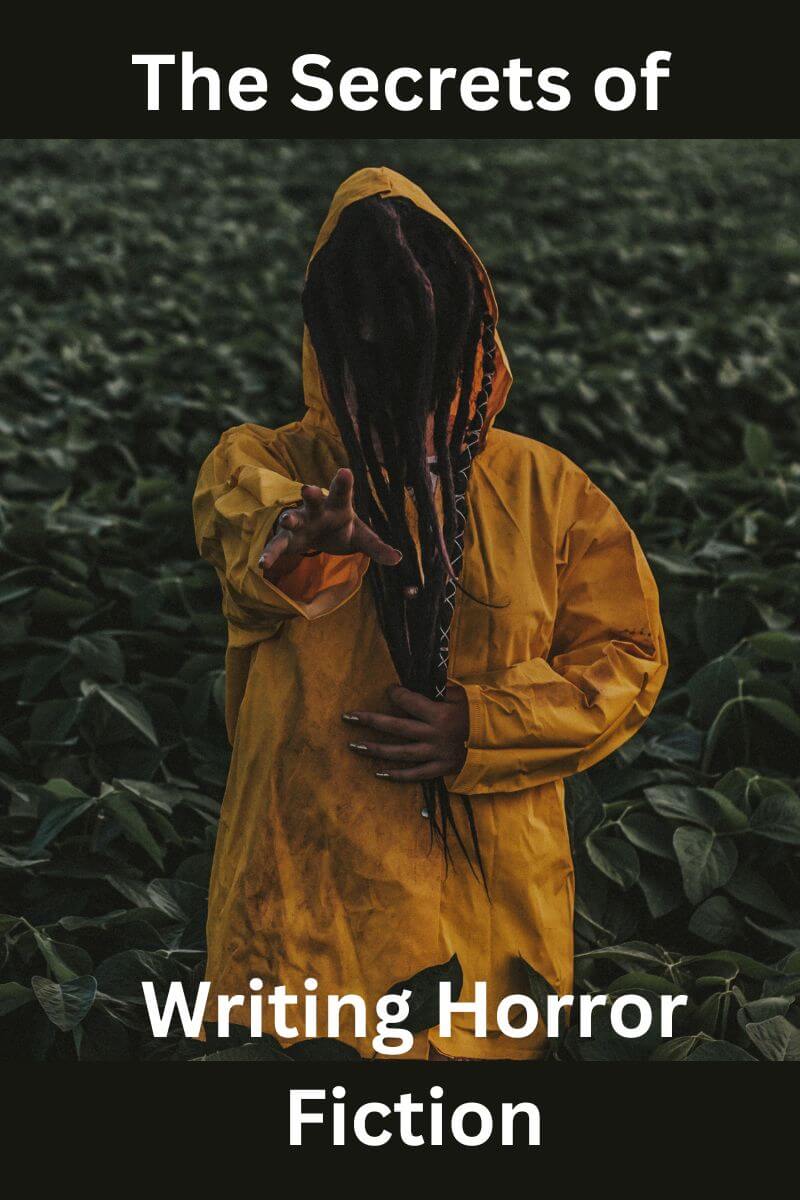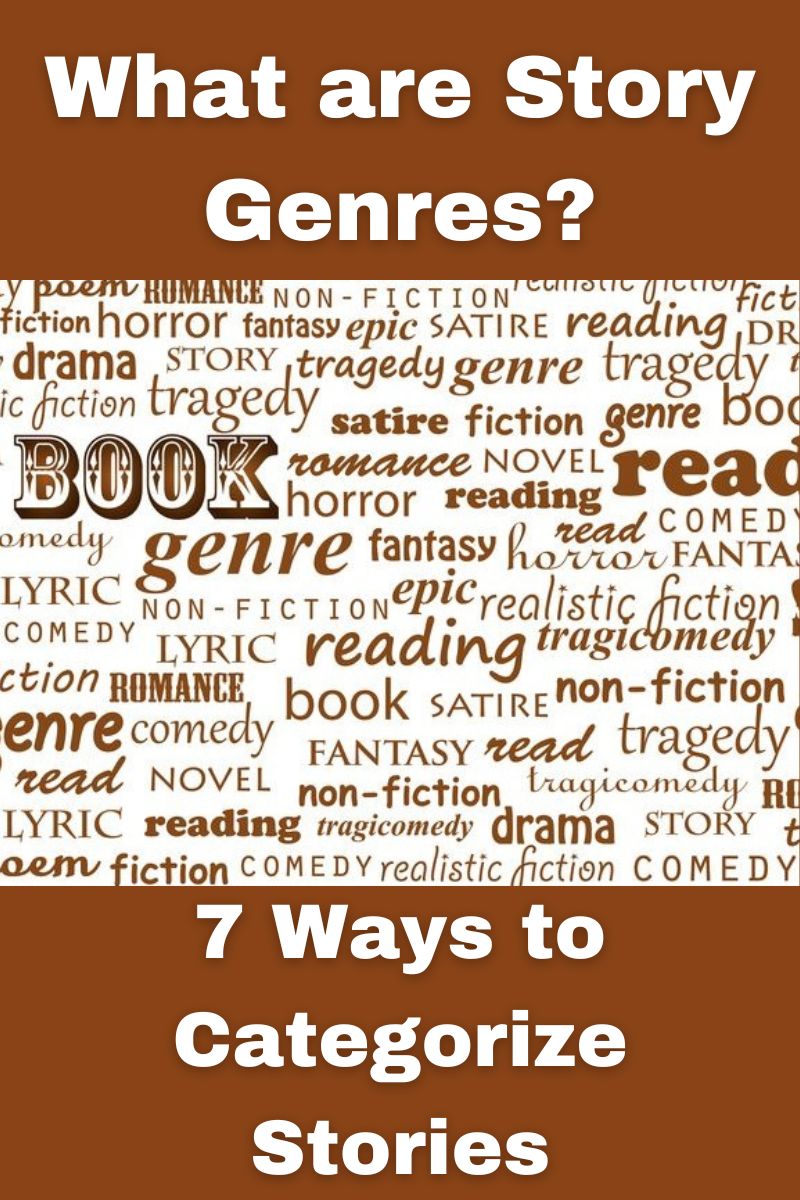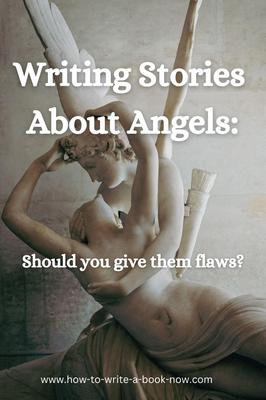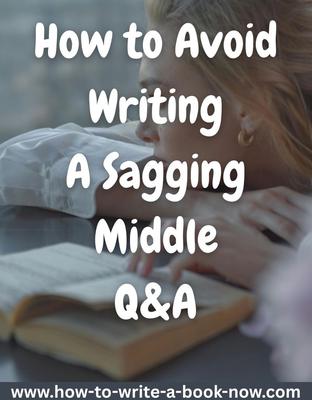6 Dark Secrets You Can Use to Write a Horror Story
By Glen C. Strathy

How do you write a horror novel? The most obvious answer is to take a sympathetic character and put them up in a scary situation. But while that is correct, there are deeper, less obvious aspects of this genre that you need to be aware of if you want to write a horror story that engages readers in a profound way.
So let's look at the essential traits of horrors stories and what you can do to make your story appealing to readers.
Dark Secret #1: Breaking the Laws of Physics
Horror is often classified under the banner of speculative fiction, along with fantasy and science fiction. These are the three genres that set aside the boundaries of realism and involve elements that do not, cannot, and (with a few exceptions in the case of science fiction) will never exist in the real world. Speculative fiction is based on the question, "What if X could be true?"
You can write a horror story set in any time period, including a historical or futuristic setting (e.g. the movie Alien). But unlike hard science fiction, horror does not confine itself to what is possible according to the laws of physics. Instead, horror deliberately departs from reality in order to disrupt characters' and readers' sense of security and cause them to feel anxiety and fear.
Human beings derive a sense of security from knowing how the world works, that it follows certain physical laws that make life predictable. We know that gravity always works, that night follows day, that physical objects have certain consistent properties, etc. Working within the unchanging laws of nature keeps us safe. For instance, you know that if you keep flammable objects away from an open flame, you can prevent house fires.
When you write a horror, you want to present your characters with a threat that defies the laws of nature, one that is supernatural. Because this threat doesn't follow the rules, it undermines the characters' sense of security and their confidence that they can protect themselves. You want to let your readers experience those feelings vicariously. A good horror story should leave readers feeling a little less secure about reality.
Tip: Give your main character a deep insecurity.
Tip: Before you write a horror story, spend sometime figuring out what scares you. What makes you nervous, anxious or unsettled? In addition to phobias, common fears include...
The unknown. The unseen. Retribution. Change. Losing control.
Failure. Making mistakes. Pain and death. Abandonment.
Rejection. Being found out. Losing respect or power.
Any of these and similar traits could be the foundation for a main character in a horror story.
At the same time, consider giving your main character something they want to protect -- something that may be even more important than their own life.
Dark Secret #2: Don't Write a Horror Story With a Happy Ending
Like in fantasy, horror stories often involve imaginary species and magic. However, the fantasy genre is full of optimistic adventure stories in which the main characters triumph over evil. When you write a horror, you describe an evil that is never truly defeated. At best, the evil simply retreats in the end. Heroes in horror fiction cannot defeat evil. The most they can do is survive it.
While many fantasy stories feature main characters who start out innocent and become strong and competent by the end, the main characters in horror tend to begin as damaged people and end up more traumatized than ever.
Generally, you want to write a horror story about one of three types of main characters...
1. Damaged souls who are already haunted by their past and can be easily triggered by a threatening situation.
2. People who are vulnerable or not in control of their life, hence already feeling a good deal of anxiety.
3. Monsters. Some horror stories are written from the monster's point of view, but even when they are not, the monster is always irredeemable and impossible to defeat.
Consequently, horror lacks the satisfying resolutions found in most fantasy stories, instead leaving readers with the sense that the evil forces are still out there and could return at any time. It's as though you set the stage for a sequel that will never be written.
Dark Secret #3: Supernatural Antagonists
Like suspense stories, horror often involves a main character who is being stalked by a threat or walking into a trap. In both genres the reader can often see the threat approaching before the main character does. However, in suspense the threat is always human. The villain may be a psychopath. He or she may be violent, immoral, and suffering from various forms of mental illness. Nonetheless, he is still a human being governed by the laws of nature.
In horror stories, the antagonist is supernatural. It is the unnaturalness of the antagonist that makes it disturbing.
For instance, a vampire is scary because it is a corpse that defies nature by remaining animate after death. It cannot be killed by ordinary means. It has no reflection in a mirror. A ghost is scary because it can walk through walls.
When you write a horror story, you can make your monster scarier by giving it unnatural traits. Even if it is based on a natural predator, like a shark or scorpion, you will probably want to make it unnaturally aggressive, large, or strong. You may want it to reproduce at an unnaturally fast rate or resistant to normal means of being killed. Your antagonist may have magical abilities that make it especially dangerous.
In addition to unnatural physical abilities, many good monsters have traits we normally associate with psychopathy or other forms of mental illness. A character who lacks empathy or whose thoughts and behavior are far outside the norm can be scary because they are less predictable. And if they also are hostile or sadistic, and have unnatural abilities, they can be a great antagonist in a horror story.
In addition, it also helps if your antagonist is...
1. Powerful. Obviously, the monster must be a threat that cannot be overcome easily.
2. Hideous, or otherwise disturbing to look at. (Though sometimes a monster that looks innocent or beautiful can be disturbing because of the contrast between its appearance and its behavior.)
3. Mysterious. The less the characters know about the monster, the more difficult it is to understand and predict its actions.
Sometimes an antagonist can take the form of a faceless malevolent force -- as though nature itself has turned against humanity. Again, this is disturbing because it violates what we know about how the laws of nature work.
Dark Secret #4: The Gothic Element
When you write a horror story, it helps to remember that the genre grew out of the gothic tradition and shares some of its traits. The archetypal gothic story goes something like this...
"A young, innocent woman finds herself in an isolated, ancient, and mysterious place (e.g. a castle, mansion, monastery, etc.) where an ancient evil awakens and threatens her. In the struggle to survive, her loyalty is torn between two men who have strong feelings for her. One is an older man, a father figure, while the other is young and romantically drawn to her. In the end, the older man is revealed to be the villain and the woman must survive by choosing the young man."
In gothic stories, the ancient evil generally symbolizes the father figure's incestuous desire for the young woman, which she must reject in favour of the younger man with whom she can have a healthy romance.
In other words, one of the secrets of the horror genre is that the initial driver or root cause of the story is often one character's hidden sin, crime, or improper desire. It's that dark secret that summons the evil forces. When the monster appears and terrorizes the community, it sometimes forces the secret into the open where it may be resolved (usually at the climax of the story). More often, the secret is not resolved and the guilty party is destroyed by the monster, usually after a number of innocent people have also been killed.
For example, in the TV series Midnight Mass, it is the priest's guilt over having had an illegitimate child with one of his parishioners that leads to the community being plagued by a vampire. In The Shining, the main character's unacknowledged self-recrimination over how he sabotaged his career and his family by hitting one of his students leads to his involvement with the evil forces at The Overlook Hotel that eventually destroy him.
Dark Secret #5: Visceral Elements
Another technique you can use to unsettle your reader when you write a horror is to make use of visceral elements such as graphic language, violence, gore, and sexual behavior.
Horror stories generally fall into two categories:
1. Slow build horror begins with fairly normal events, settings, and action and gradually introduces the visceral elements until they become quite marked at the climax. Suspense is created as the reader wonders just how bizarre things are going to get.
2. Visceral horror stories introduce visceral elements right from the start, letting the reader know upfront they are in a shockingly disturbing story world that can only get worse.
Dark Secret #6: Defy Narrative Conventions
As with psychological suspense, visceral horror stories often depart from normal narrative conventions in order to make readers feel like they are less certain about what is reality within the story. They may use more flashbacks, dream sequences, or hallucinations. They may use many point-of-view characters. They may play with format presenting the story as a "found report," diary, a collection of handwritten documents or newspaper clippings -- some of which may be incomplete. They may use more illustrations or unconventional typography -- anything to prevent the reader from feeling comfortable with the story.
Along these lines, when you write a horror story you may want to avoid having your plot unfold in a logical sequence of events. While you cannot use "jump scares" the way horror films do, you still want to surprise your reader. Alternate calm scenes with shocking, intense, adrenaline provoking scenes. Make your story like a haunted house at an amusement park (i.e. the reader should never know when the monster will leap out at them). Be unpredictable.
Dark Secret #7: Atmosphere
Okay, I misled you. Here's more more secret...
When you write a horror story, try to create a dark, foreboding atmosphere. This is particularly important in a slow build horror where you want to give the reader a subtle sense of unease in the earlier chapters, while keeping the more graphic elements in reserve for the crisis and later chapters.
Tip: Start with a basic idea.
Here's a simple, fill-in-the-blanks formula you can use to develop an idea for a horror story. Note that you adapt this however you like, but try to include all the parts.
"A _____________ [character], who is haunted by __________ [state their tragic past, the source of their insecurity, etc.] becomes threatened when ______________ [the manifestation or appearance of the monster, supernatural force, etc.]. The character fights/escapes by _____________ [some course of action] but ____________ [state the price that will be paid along the way], and the character is left with the feeling they will never be safe again."




























